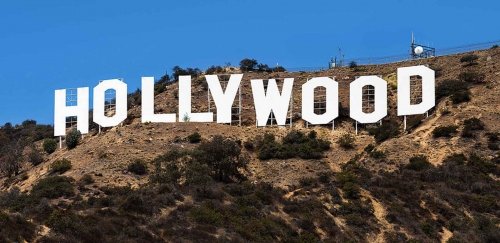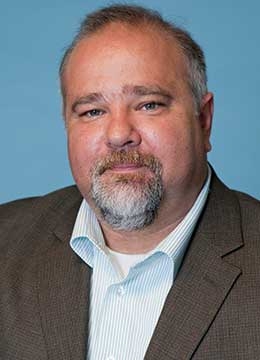A Behind-the-Scenes Look at the Television Industry
- News & Events
- News
- A Behind-the-Scenes Look at the Television Industry

Like Toto in Oz who pulled back the curtain to expose the Wiz, Anthony Galvez recently flew to Hollywood to take a look at the wizardry behind film and television.

RIC Assistant Professor of Communication Anthony Galvez was one of 20 media faculty selected nationwide by the Television Academy Foundation’s Education Programs Department to receive an all-expense-paid fellowship to participate in a five-day faculty seminar in Hollywood.
“This seminar is not only a means of recognizing some of the top media educators for their leadership in media and television education,” said Norma Provencio Pichardo, executive director of the Television Academy Foundation, “but it paves the way for their students by shedding light on aspects of the industry that are usually behind the scenes.”
Each day Galvez met with top production and programming people from major studios, production companies and TV networks. “We were driven each morning to the academy’s office complex,” said Galvez. “Panelists, who consisted of Emmy Award-winners from various areas of the industry, would sit at a table at the front of the room, facing microphones, and present on topics and respond to questions.”
Topics included the politics of the industry; how producers and writers function; the development of ideas; program selection, scheduling, promotion and cancellation; and digital entertainment. Panelists included Jerry Weintraub, executive producer of the “Karate Kid” trilogy; Len Amato, president of HBO films; and Jason Katims, producer of “Parenthood.”
In the afternoons, the group received private tours of major production studios, such as Warner Bros., where they were allowed on the sets of “Two and a Half Men” and “Big Bang Theory.” “Some of the studios were the size of a small city,” Galvez said. They toured Stargate, a state-of-the-art visual effects studio and saw a live taping of the “Arsenio Hall Show.”
Arsenio conducted interviews by reading from a teleprompter, said Galvez, which is common to most talk show hosts. He also noted the emphasis on procuring a young audience. “The producers hand-picked the audience members. We were the only members of the audience over 30. In the television industry, the goal is to attract the young – the Millenials.”
On the last day of the seminar, the group was invited to an exclusive meeting of programming executives from ABC, CBS, CW, Fox and NBC.
“It was a very closed meeting,” Galvez said. “All cell phones had to be turned off and no photos taken. Because the networks are always trying to ‘out program’ each other, none of the young executives would talk about their future programming; they only spoke about how they have programmed in the past. They did discuss in detail the research that goes into programming for primetime television. We discovered how each network makes decisions and how they interact with studios and advertisers to make it all profitable.”
Galvez summed up the seminar as a “once-in-a-lifetime experience.” “I am now better equipped to advise my students on skills they’ll need to break into the industry and to educate those who will shape its future.”
